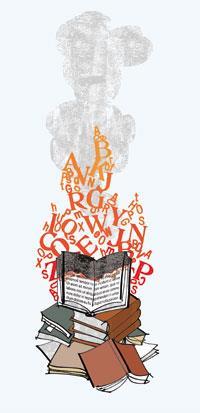Paper must be one of the great chemical inventions

Paper must be one of the great chemical inventions. Writing itself was probably created by marking wood, or by scoring marks on wet clay and then firing it. The first flexible writing material was probably animal skin and the first ink for it was probably some viscous glue blackened with charcoal powder. But when the Ancient Egyptians invented paper, they took a giant step forward.
By devising a way of matting fibres of the reed papyrus together the Eygyptians made flexible sheets. We still depend utterly on that mighty achievement. The art of matting vegetable fibres together into a flexible sheet and writing (or later printing) on that sheet is so crucial that we take it for granted.
Ancient documents, such as the Dead Sea Scrolls, can be read only because they are still flexible enough to be unrolled and the writing still unfaded enough to be discernible. No polymeric product has displaced paper as a medium for storing information. It is a masterpiece of chemistry.
To destroy paper, you burn it. Dictators anxious to erase dangerous ideas still go in for book-burning, which makes paper inflexible, so that you can’t open a book; and blackens it so that even if you could open the book, you couldn’t read it. During the second world war, many documents were fire-bombed into oblivion but two police chemists, W D Taylor and Henry J Walls, found a way to save some of them.
Taylor and Walls treated carbonised documents with chloral hydrate solution and could then often read them. I love the idea of extending their methods: there are many documents which historians would be delighted to read, but which have been burnt by design or accident. One example is a whole library of burnt Roman scrolls at Herculaneum. It was destroyed in the same Vesuvian eruption that demolished Pompeii.
But even if we could make the lettering more readable with chloral hydrate solution, the burnt, embrittled scrolls of Herculaneum cannot now be unwound and we could never read the lettering inside. Yet imagine putting such a scroll in a nuclear magnetic resonance imaging tomograph. Such machines are famously used in medicine for brain scans and have spread into other disciplines too. They have been used to look at fossils, for example - so why not scrolls?
The tomographic physics is a big challenge in itself; but we can perhaps imagine the chemistry. Those police chemists were happy to exploit the action of chloral hydrate solution on charred paper but did not understand how it worked - so what is special about the stuff? My guess is that it ’decorates’ the ink or the glue in it. Sodium vapour acts in the same way on the micro-cracks in glass and seems to deposit preferentially in those cracks making them visible under a microscope. I like the idea of sitting an ancient scroll in a jar of some cunning chemical vapour and then putting the whole thing in a tomograph. The right vapour might well form some compound with the ink or the glue of the lettering. Its nuclei could then show up well enough in the tomograph to let you read the scroll!
In the absence of any guiding theory, a practical chemist might choose vapours by pure whim. Hydrogen sulfide? Ethyl borate? Ammonia? Diethyl zinc? Chlorine? Cobalt carbonyl? Dicacodyl? Chloral vapour? It would be splendid if a combination of clever chemistry and clever physics provided a powerful answer to the dictators and book-burners of
the world.
David Jones












No comments yet